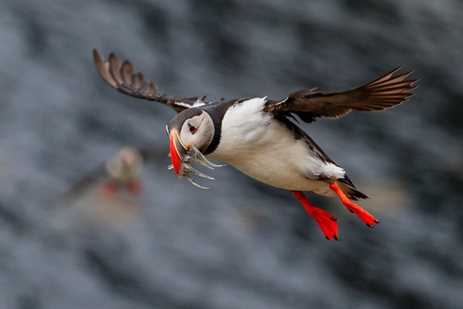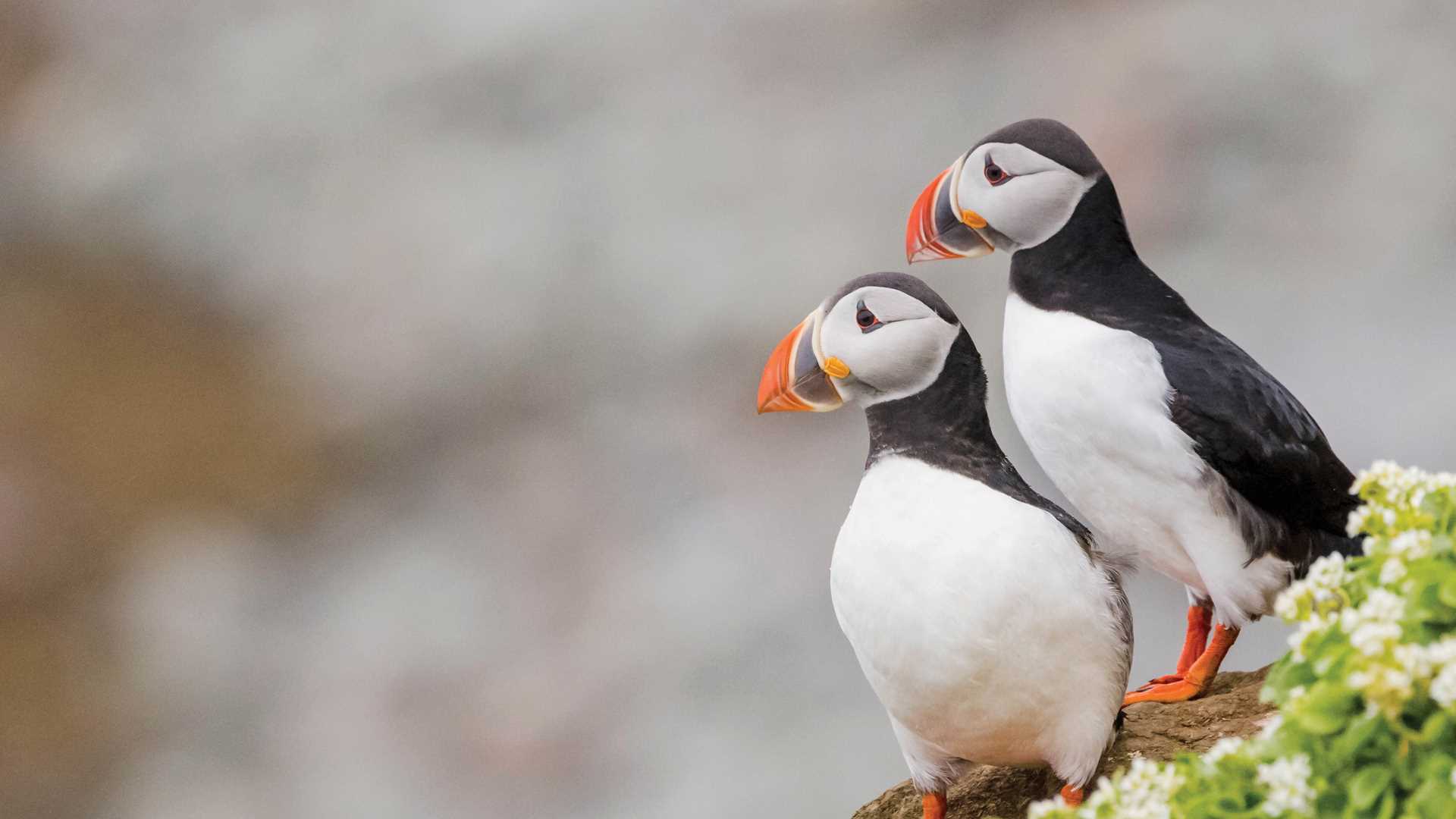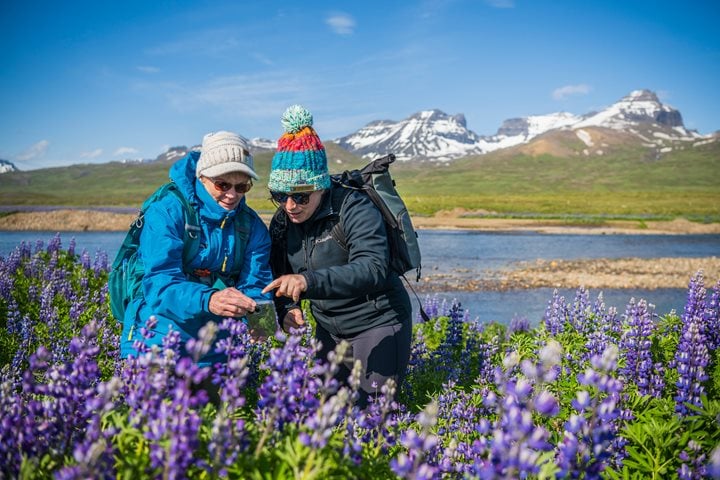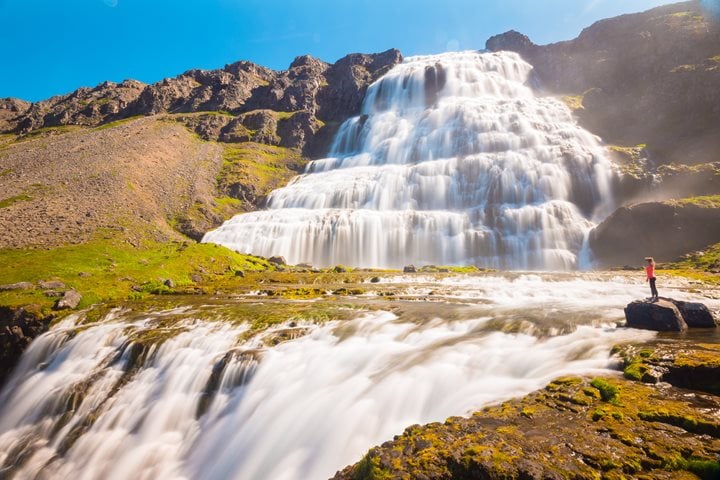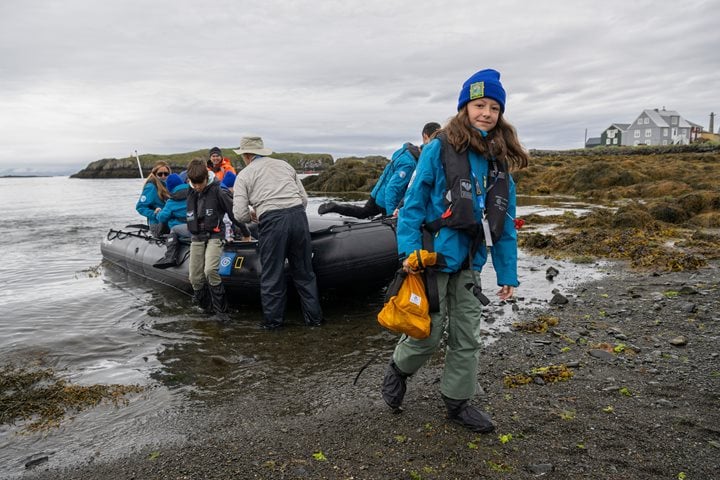Atlantic puffins may not be the official bird of Iceland, but they are certainly synonymous with the island nation. Every year, people flock from around the globe to spot these charismatic birds in their wild element. You can find them from the end of April to early September when they return from a long winter at sea to their breeding colonies perched along Iceland’s rocky cliffs. Before you visit, learn more about these fascinating "parrots of the sea."
Get Inspired By Photos, Videos, Webinars, Stories and Exclusive Offers.
Sign upThey Are Icelandic Icons
Iceland is the breeding ground for 60% of the world’s puffins. The rugged Westman Islands, off of Iceland's south coast, are home to the world’s largest single colony, with over one million birds gathering annually to lay their eggs.
Photo: Ralph Lee Hopkins

Their Beaks Change Color
A puffin’s beak changes color depending on the time of year. As the breeding season begins in spring, it turns a flashy, bright orange which is thought to help attract a mate. Come winter, they shed that colorful outer bill, leaving behind a smaller, duller gray beak.
Photo: David Vargas

Their Beaks Can Glow
Puffin beaks also have a surprising feature: they glow under UV light! Scientists first learned about this peculiar adaptation back in 2018 when they discovered the yellow ridges light up in incredible fluorescent colors when placed under UV light. Researchers are still working out the purpose of this trait, but it may play a role in mating.
Photo: Stewart Cohen
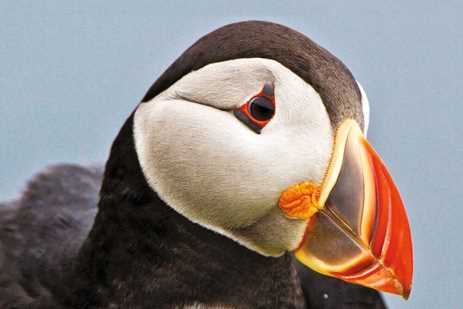
They Are Extremely Fast and Nimble
Unlike penguins, which these black and white birds often remind people of, puffins are extremely adept at flying. They can flap their small wings up to 600 times per minute and can speed through the air up to 58 miles per hour.
Photo: Ralph Lee Hopkins
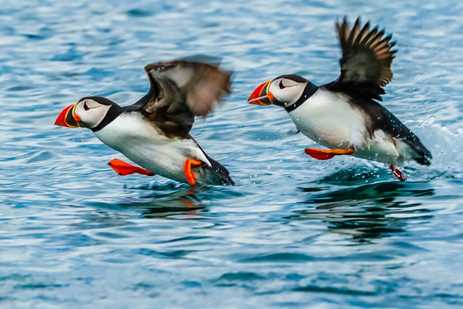
They Mate for Life
Puffins don’t begin breeding until they are between the ages of three and six. However, once they start and have a found a suitable partner, they usually mate for life. Couples return each year to the same burrow where they raise a single chick (known as a puffling!) and share parenting duties.
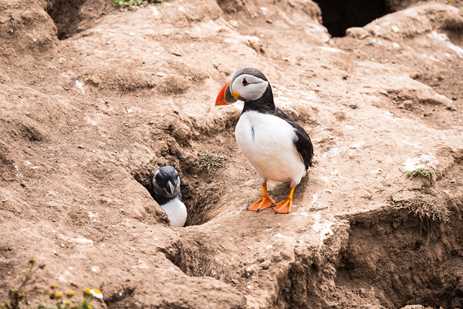
They Touch Beaks When They Reunite
When a couple reunites for breeding season, they rub their beaks together in a heartwarming behavior known as billing. This sweet display often draws a crowd of other puffins who share in the joyful reunion.
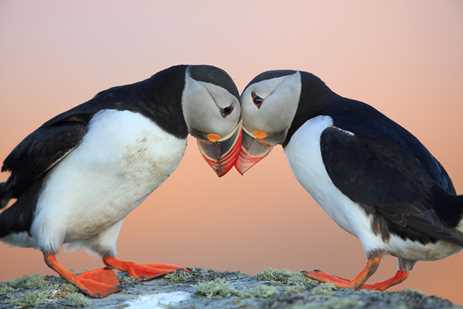
The Pufflings Sometimes Need Rescuing
Come August and September, juvenile pufflings are ready to leave their nests at night. They use the light from the moon and stars to guide them out to the ocean, but many get confused by lights coming from neighboring towns. Each year, the residents of Iceland’s Heimaey Island help rescue lost birds found wandering the streets and release them safely out to sea.
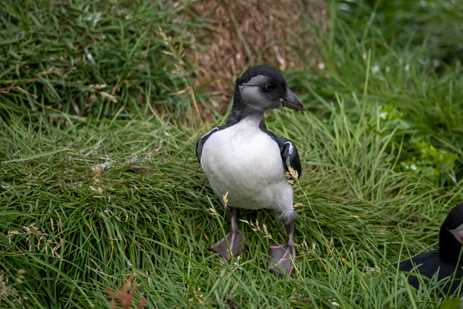
They Are Powerful Divers
These birds may be small, but they are mighty. Puffins can dive to depths of more than 130 feet—that’s 156 times their body length. Using their wings like flippers, they propel themselves through the water to chase their prey.
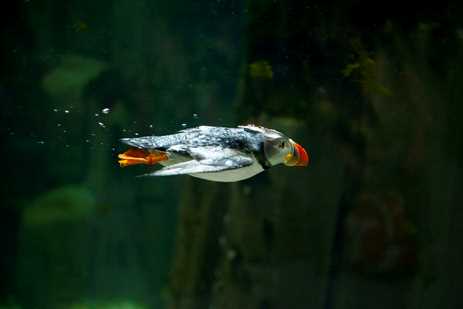
They Are Adorably Small
Atlantic puffins are just 10 inches tall and weigh just under one pound—clocking in as the smallest of the four puffin species (and the ones found in Iceland.)
Photo: Ralph Lee Hopkins

They Can Catch and Carry a Lot of Fish
Their bills are uniquely designed for fishing. Course tongues and a layer of spines on their upper palate help puffins catch and carry 10-20 fish in their mouths at once. The record is held by a puffin in Britain who carried an astonishing 62 fish in one go.
Photo: Ralph Lee Hopkins
